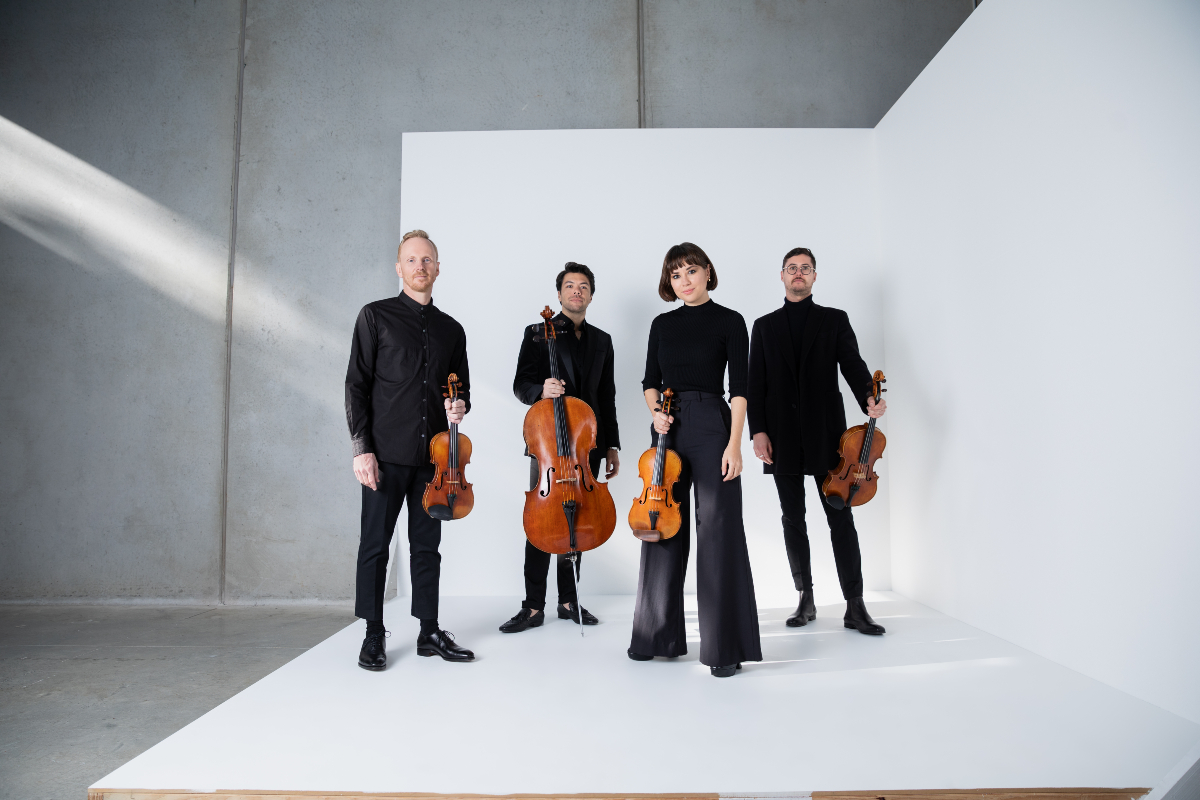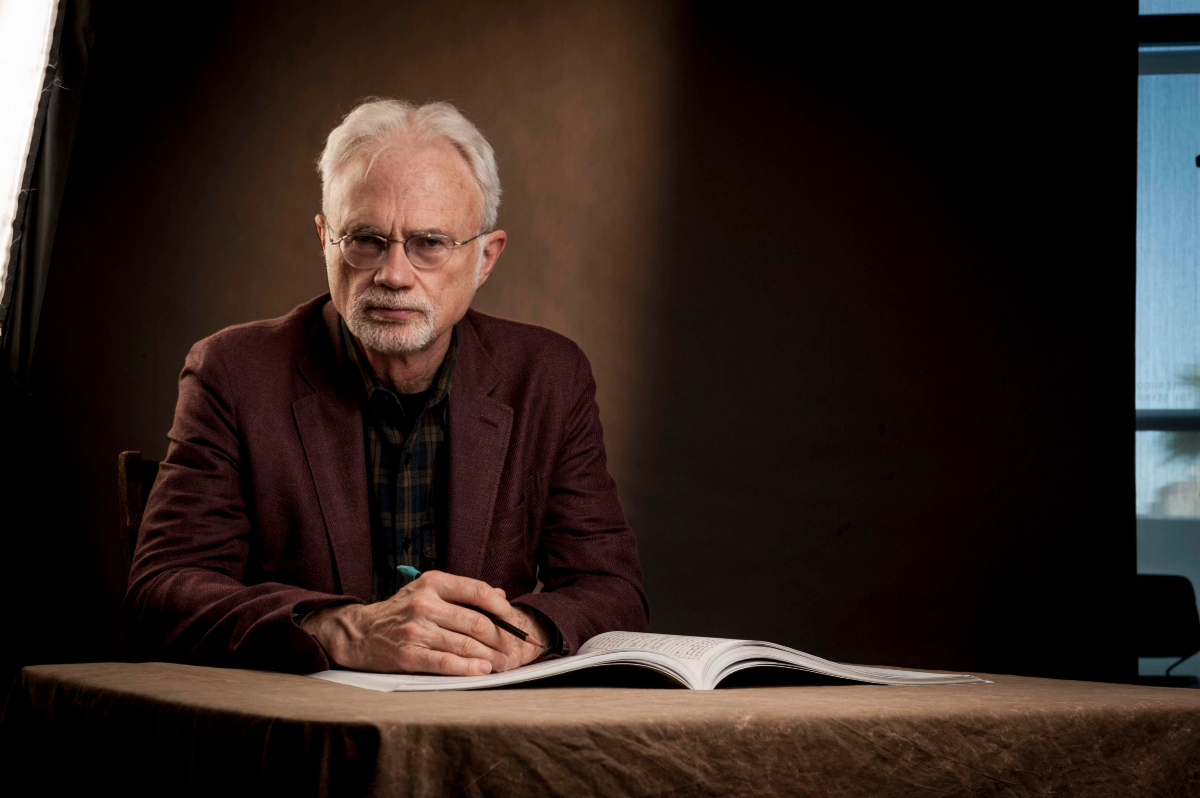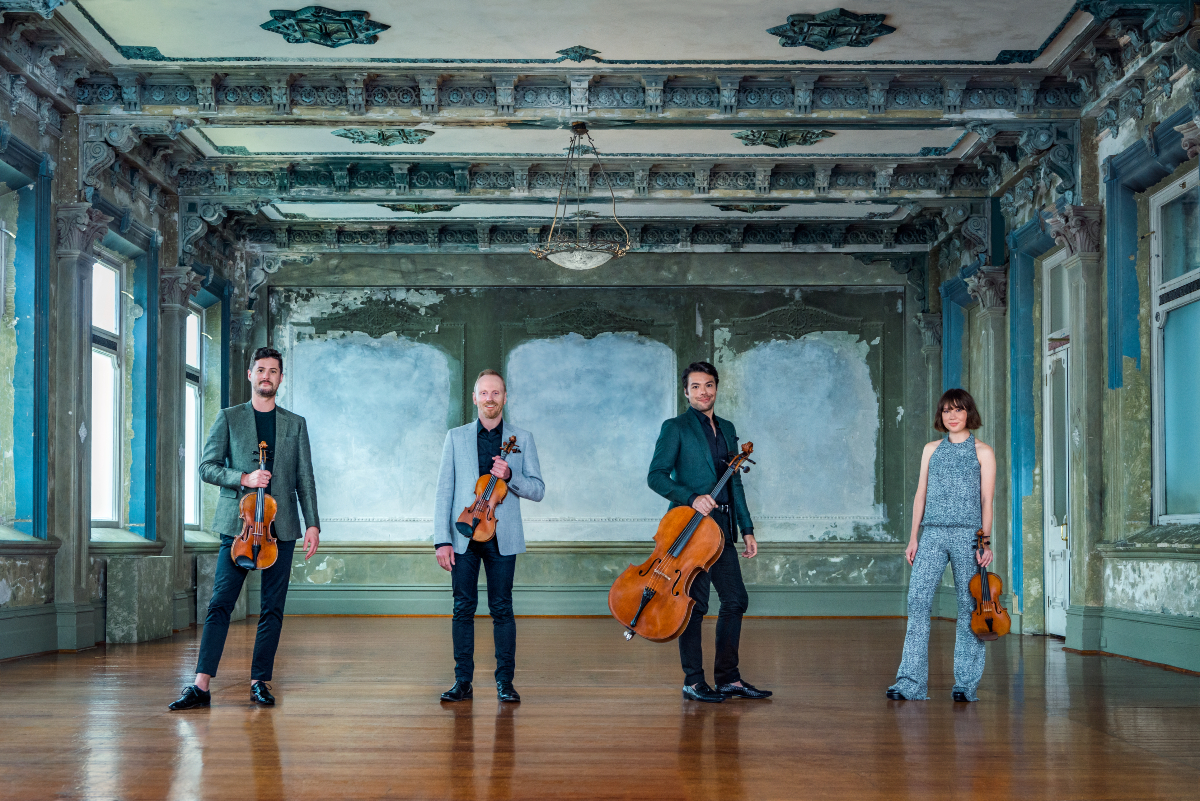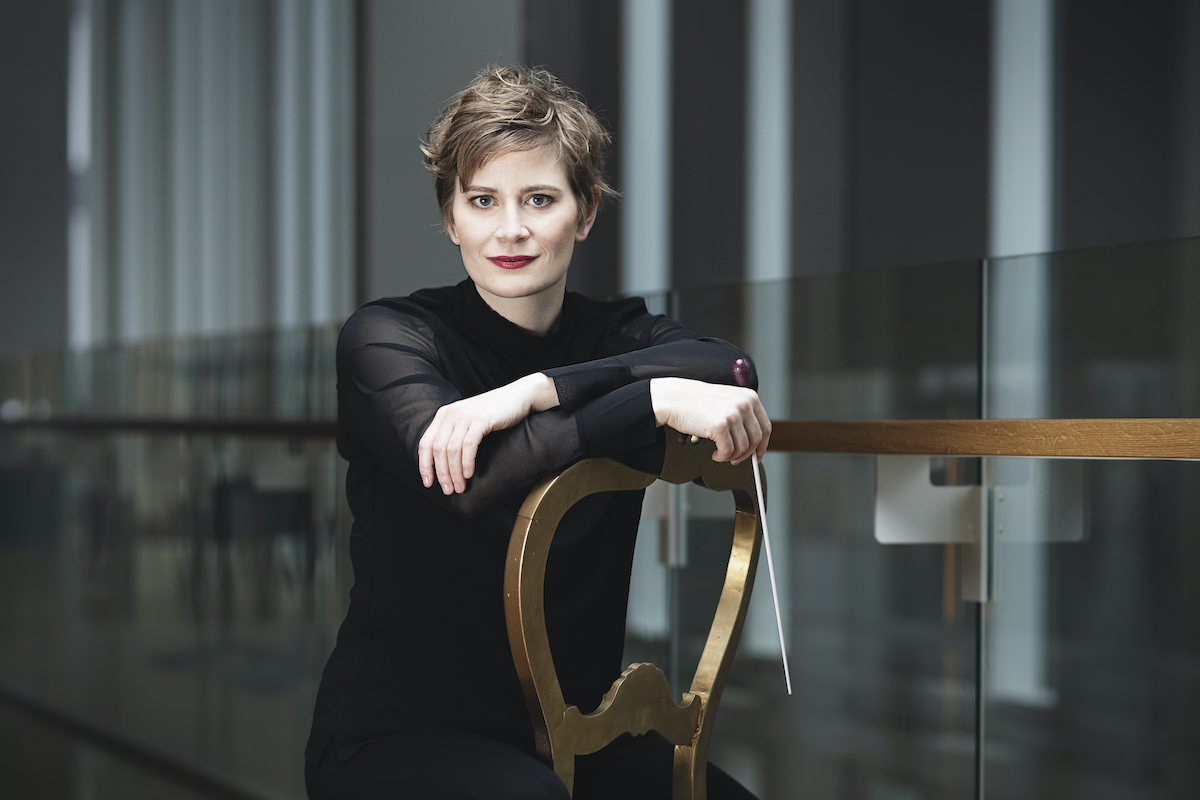Inspiration takes many forms. This June, be inspired by the Sydney Symphony collaborating with Australian String Quartet to perform three pieces that feature composers borrowing and quoting from their forebears.

Australian String Quartet. Photo © Agatha Yim
Composers have always been inspired by the composers who came before them.
From Vaughan Williams reaching back to the Renaissance for his Fantasia on a Theme by Thomas Tallis to Brahms’ Variations on a Theme by Haydn, from Richard Strauss quoting Beethoven’s Eroica Symphony in his Metamorphosen to Beethoven’s chamber works inspired by opera arias by Mozart and Haydn, the history of music is one of reverence, tribute and influence.
In June the Sydney Symphony Orchestra explores the history of musical inspiration through three works, each drawing on the past in different ways: Ravel’s Tombeau de Couperin, which uses the structure of Baroque dances to pay tribute to friends the composer lost during the First World War; Schoenberg’s orchestration of Brahms’ First Piano Quartet, which takes the richness of the original work and maximalises its sound and texture; and Absolute Jest by John Adams, which takes snippets of Beethoven and walks them through ‘a hall of mirrors’ to create something new, yet delightfully familiar.

Composer John Adams. Photo © Vern Evans
There will be some interesting inspiration and collaboration occurring on stage too: Adams’ piece is structured like a concerto, with a soloist out the front of the orchestra – except that the soloist is an entire string quartet. So in this performance you hear not just the Sydney Symphony Orchestra, but the superb Australian String Quartet as well.
It is an exceptionally rare setup, and an experience the Quartet are hugely looking forward to.
“To pit four voices against an orchestra is a pretty dramatic landscape, particularly as a performer, but also as an audience member,” says the Quartet’s cellist Michael Dahlenburg. “It creates an absolutely huge juxtaposition of sound.”
“What I really love about this piece is that Adams doesn’t change the quartet and he doesn’t change the symphony orchestra,” says violinist Francesca Hiew. “He keeps the symphony at full pelt. It’s like this strange dream where you’re hearing all these bits and pieces. But then he works the quartet into it in such a way that the quartet can still function like a quartet should without stopping the orchestra from playing. He intertwines it in this really great way.”
Absolute Jest is a great joy for anyone who knows Beethoven’s music well, with quotes and references coming thick and fast throughout the piece. Adams was inspired particularly by Beethoven’s last couple of string quartets, but you can hear flashes of bits from the symphonies and even some of the piano sonatas, too.
“There’s so much to discover,” says violinist Dale Barltrop, who along with Hiew has performed the work previously during their time in the ASQ. “Every time we come back to this piece, it’s like unpacking all of these new ideas and discovering new quirks in the writing because it’s just so rich and so brilliantly woven together.”
“Adams has said that the DNA of this work is the ecstasy of Beethoven … the ecstasy and the power of the scherzos [in particular],” says Dahlenburg.
“When we often think of Beethoven, [the scherzos are] where he does his most concise work in the shortest space of time with the fewest notes. He can really create this absolute paradigm that encompasses that whole movement, that therefore really gives the whole jest, its life, its playfulness.”
“It’s a really fascinating of tapestry of a work.”

Australian String Quartet. Photo © Jacqui Way
Conductor Anja Bihlmaier agrees, though in slightly different words. “It’s really freaky and it’s totally crazy,” she says with a laugh.
“You are getting really transformed, and taken to another world. It’s like a drug, if you drink a lot of it you get a little bit dizzy – but it’s a nice feeling! It’s a bit like hypnosis.”
Bihlmaier says she has experienced some of that discombobulation herself in preparing for this concert – knowing Beethoven’s scores as well as she does, she finds herself getting tripped up by Adams’ inventive and unexpected digressions.
“Beethoven, for me, has a very strict architecture,” she explains. “But within that architecture you are quite free – there is a lot of excitement and passion within Beethoven’s compositions, which is something that fascinates. [But with Absolute Jest] we have Beethoven material, but the whole architecture and the whole thing is very different. Beethoven is not Beethoven anymore.”
‘It is like looking in a mirror, and you see different perspectives at the same time. It’s not just one perspective – it’s double, triple, and then so many layers at the same time. Adams tries to confuse you in a very great way – you don’t know what’s up and what’s down, or where the sides are – you are confused!”

Anja Bihlmaier. Photo © Nikolaj Lund
Bihlmaier is excited to be making her Sydney Symphony debut in this program. The German conductor spent many years working through the German opera pipeline, including positions at Hanover State Opera, before deciding to dedicate herself to orchestral music.
That move has been a tremendous success, very quickly being named Principal Guest Conductor of Finland’s esteemed Lahti Symphony Orchestra and Chief Conductor of The Hague’s Residentie Orkest from 2021-2022 – the first woman to hold either of those roles. She recently made her debuts at Glyndebourne and at The Proms, and is very much looking forward to her debut in Sydney.
“I think the program is just amazing,” she says enthusiastically. “It has so many colours. And then we have this red line [running through] with two composers for every piece, but very different ones.”
“They are all related with each other, and there is a very strong relationship between the composers. But if you listen to it, it’s totally different music. And that’s what I think is very exciting – it’s a nice combination.”
It’s a program that Bihlmaier has put together specifically with the Sydney Symphony, and the audience, in mind. “I thought of your orchestra – they have a brilliant reputation in Europe about being very, very colourful, but also very virtuosic.”
“I also heard that your audience is quite unique, that the audience is really interested in many different kinds of repertoire and very open and very special. That’s what people here in Europe say about the Australian audience.”
It sounds as though inspiration has been flowing in several directions leading up to this concert.
Hear The Sydney Symphony Orchestra with the Australian String Quartet live at the Sydney Opera House, 6–8 June, 2024. Book tickets now at the Sydney Symphony Orchestra’s website.












Comments
Log in to join the conversation.